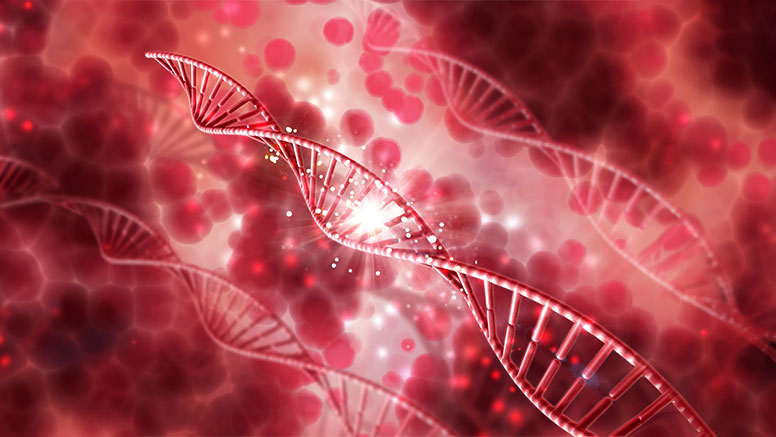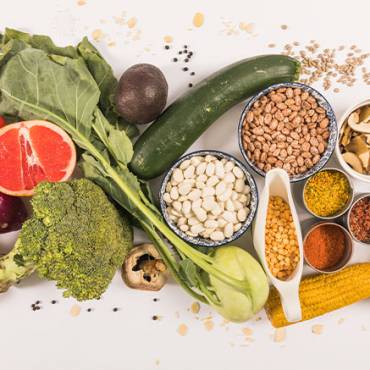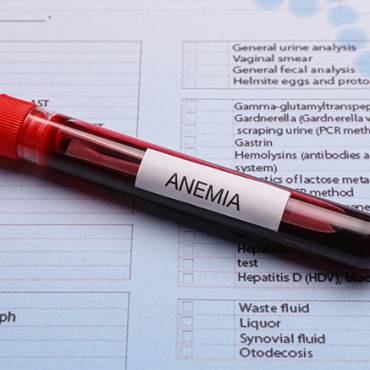Anaemia can be defined by a condition in which the total haemoglobin (Hb) level or number of red blood cells (RBCs) is poorly lowered. These values depend on the age, gender, physiological status, and altitude at which the population being assessed lives. WHO Hb thresholds used to define anemia in different age groups. According to World Health Organization (WHO) two billion people are suffering from anemia in the world of which a major proportion is from South Asia. Globally, almost half (47.4%) of all preschool aged children and 41.8% pregnant women suffer from anemia. Approximately 50% of cases of anemia are considered to be an iron deficiency. Iron deficiency is the most common cause of anemia. Iron deficiency anemia (IDA) may happen following dietary iron deficiency, blood loss, drinking too much cow’s milk and malabsorption. IDA is an anemic condition characterized by incomplete Hb synthesis that results abnormal RBC formation due to the inadequate iron. HB concentration is the key indicator for a functionally important iron deficit, specifically IDA.
| Hemoglobin levels to diagnose anaemia at sea level (g/dL) | ||||
|---|---|---|---|---|
| Population | Non-anemia* | Anemia* | ||
| Milda | Moderate | Severe | ||
| Children 6 – 59 months of age | 11 or higher | 10 – 10.9 | 7 – 9.9 | Lower than 7 |
| Children 5 – 11 years of age | 11.5 or higher | 11 – 11.4 | 8 – 10.9 | Lower than 8 |
| Children 12 – 14 years of age | 12 or higher | 11 – 11.9 | 8 – 10.9 | Lower than 8 |
| Non-pregnant women (15 years of age and above) |
12 or higher | 11 – 11.9 | 8 – 10.9 | Lower than 8 |
| Pregnant women | 11 or higher | 10 – 10.9 | 7 – 9.9 | Lower than 7 |
| Men (15 years of age and above) | 13 or higher | 11 – 12.9 | 8 – 10.9 | Lower than 8 |
| * Haemoglobin in grams per liter a. “Mild” is a misnomer: iron deficiency is already advanced by the time anaemia is detected. The deficiency has consequences even when no anaemia is clinically apparent |
||||
Lower Hb level is suggestive of IDA, please consult your doctor.
[expand title=References]
1. WHO Anemia: available on https://www.who.int/data/nutrition/nlis/info/anaemia#:~:text=WHO
2. Salma AlDallal. Iron Deficiency Anaemia: A Short Review. AlDallal, J Cancer Res Immunooncol 2016, 2:1. This is an open-access article distributed under the terms of the Creative Commons Attribution License. The article has been taken from the Journal of Cancer Research and Immuno-Oncology and the content has been modified for its use on the platform. This is attributed to Salma AlDallal and the original version can be found in the link: https://www.semanticscholar.org/paper/Iron-Deficiency-Anaemia%3A-A-Short-Review-AlDallal/2f0b306d67f460f95c9493bf49d5c77d7f0312a9. Iron Deficiency Anaemia: A Short Review. AlDallal, J Cancer Res Immunooncol 2016, 2:1.
3. Nadar Indrasari Y, Nurul Hapsari S, Robiul Fuadi M. Potential Marker for Diagnosis and Screening of Iron Deficiency Anemia in Children. IntechOpen; 2022. This chapter is distributed under the terms of the Creative Commons Attribution License (http://creativecommons.org/licenses/by/3.0)Available from: http://dx.doi.org/10.5772/intechopen.102792.
4. Hirpasa Teressa. A Review on Major Causes of Anemia and its Prevention Mechanism. Int J cell Sci & mol biol. 2019; 6(3):0058 555686. This work is licensed under Creative Commons Attribution 4.0 License. The article has been taken from international journal of cell science and molecular biology and and the content has been modified for its use on the platform. This is attributed to Hirpasa Teressa and the original version can be found in the link: https://juniperpublishers.com/ijcsmb/pdf/IJCSMB.MS.ID.555686.pdf. A Review on Major Causes of Anemia and its Prevention Mechanism. Int J cell Sci & mol biol. 2019; 6(3):0058 555686.
5. WHO Haemoglobin concentrations for the diagnosis of anaemia and assessment of severity. Available from https://apps.who.int/iris/bitstream/handle/10665/85839/WHO_NMH_NHD_MNM_11.1_eng.pdf
[/expand]






